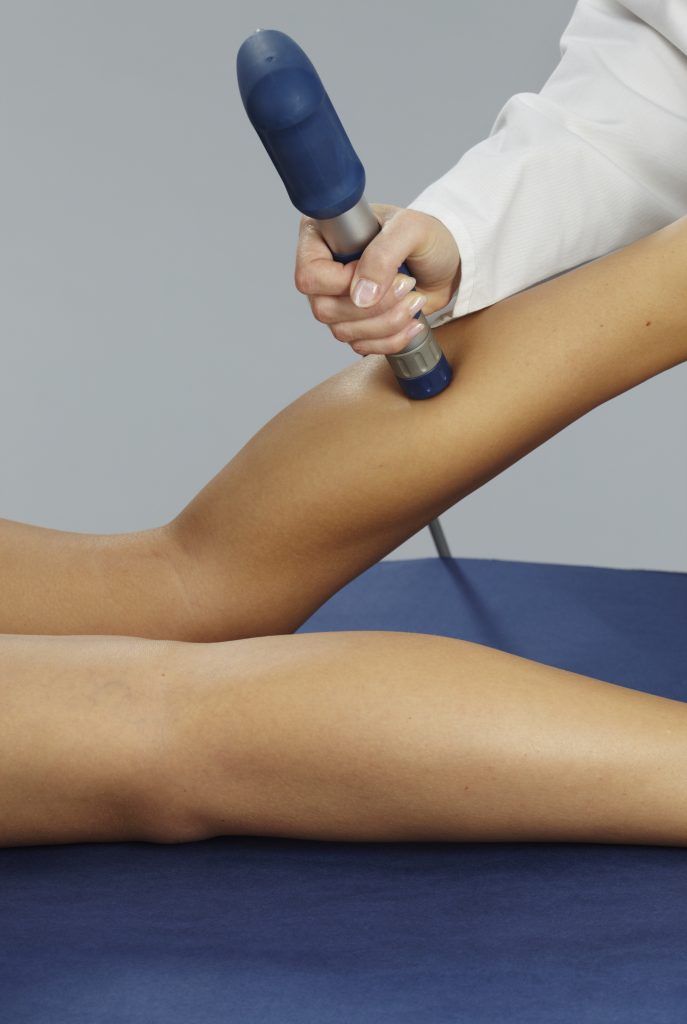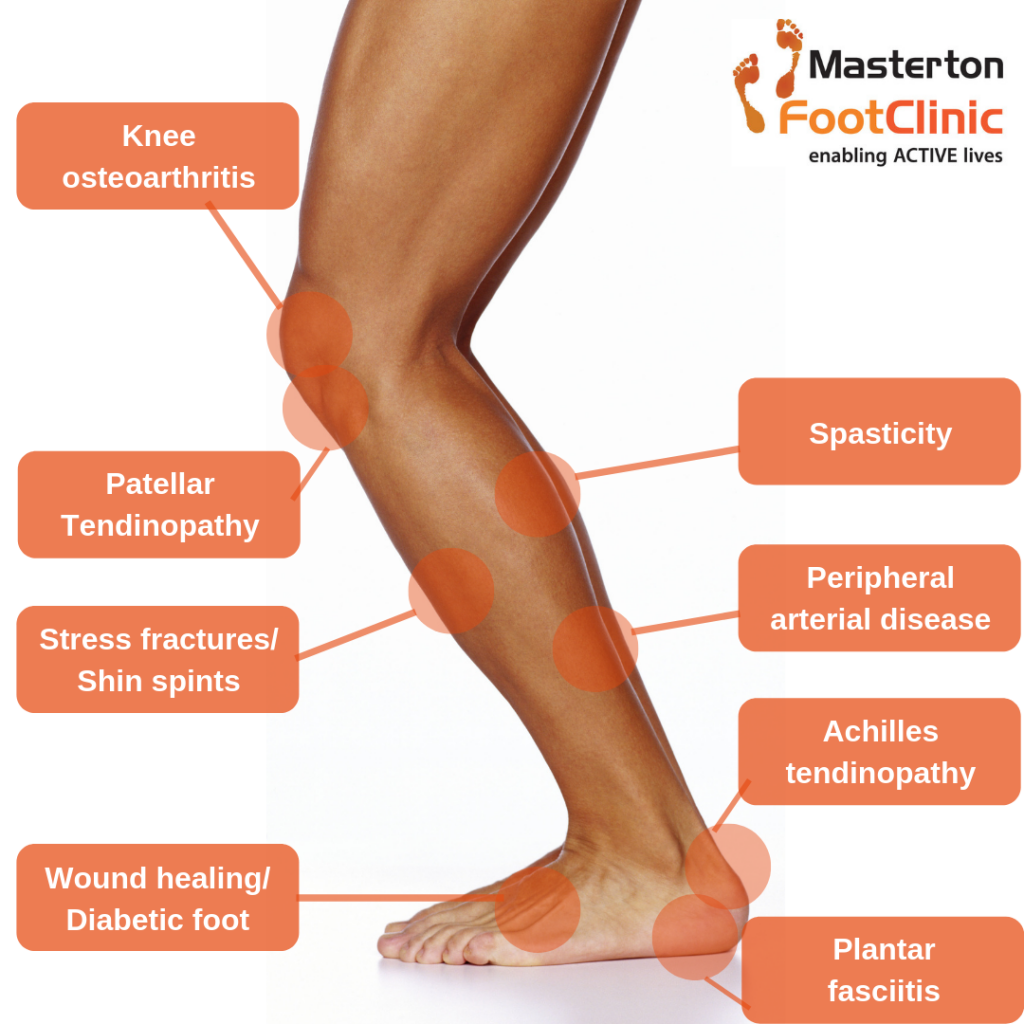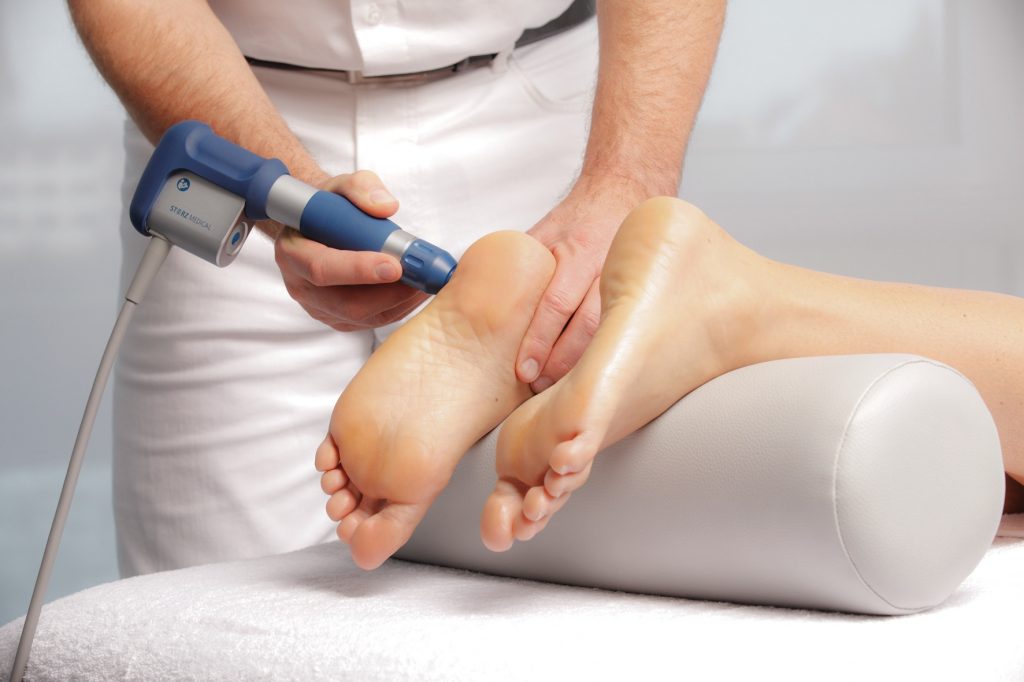Shockwave Treatment
Reduce pain and repair muscular and sporting injuries without medications or surgery

We’re proud to be the first to introduce Radial Pressure Wave (RPW) treatment to the Wairarapa. It is part of our commitment to strive to constantly improve and enhance the lives of our patients.
If you’re suffering from a painful injury, whether you’ve had it for days or years, then Radial Pressure Wave treatment is for you. This is often referred to as shockwave. It is clinically proven and works to:
- Decrease pain
- Reduce inflammation
- Facilitate the body’s healing and repair process in new injuries
- Reboot the healing process in longstanding conditions or injuries
- Encourage the formation of new blood vessels
- Stimulate the regeneration of tendons
- Reduce muscle spasticity
- Disintegrate tendon calcifications
It does this by generating acoustic pressure waves into the specific (injured) area of the body via a handpiece, where it begins to take effect. For the technical description of how RPW produces these effects, as well as the studies, please scroll down to the bottom of the page.
What Can Radial Pressure Wave Treatment (RPW) Help With?
While RPW treatment is often described as the superior solution for sporting injuries, it’s also fantastic for overuse injuries that can occur from repetitive daily activities. Examples include:
- Plantar fasciitis
- Heel spurs
- Achilles tendinopathy
- Patellar tendon pain
- Other tendinopathies

- Shin splints
- Bursitis
- Calf injuries
- Hamstrings
- Trigger points
- Hip pain
- Bone repairs
- Calcifications
We love RPW because it means:
- No need for injections
- No medications
- Non-invasive
- Non-surgical
- Reduces pain and improves healing
- Relatively short treatment time per session
- Stimulates the body’s own processes to improve healing and repair
Can RPW Help You?
The first step is to get assessed and diagnosed by one of our experienced Podiatrists here at Masterton Foot Clinic. Based on your history and symptoms, we’ll be able to determine whether RPW is likely to help your injury and if so, we’ll get you started!
Additionally, we’ll often strap the foot after each shockwave therapy session to maximise the healing and repair benefits.

Does It Hurt?
Some patients experience mild tenderness with the shockwave, while others experience no pain at all. When discomfort or tenderness is felt, it is usually associated with the level of damage or injury already present.
Don’t worry – because we’re able to control the settings and intensity of the pulses, we can adjust accordingly if we need to.
Can Anyone Have RPW / Shockwave?

While the majority of patients that come in and see us can have shockwave treatment without any issues, we cannot administer it if you are pregnant or have:
- Haemophilia or other blood clotting disorders
- Acute inflammation
- Disturbed sensory and nervous function, eg. Diabetes
- Had a corticosteroid injection in the target site in the last six weeks
- Any malignancies
- Prostheses or implants
Don’t worry – we’ll chat through your options if you have any of the above during your consultation.
Let’s Get Technical
Technically speaking, compressed air drives a projectile inside the handpiece of the Chattanooga RPW Shockwave machine to a shock transmitter. Due to the speed and weight of the projectile, kinetic energy is generated which is converts into acoustic energy. These are the pulses that are felt and transmitted into the area being treated beneath the handpiece. The acoustic waves reach 5-6cm in depth and stimulate the body’s intrinsic healing mechanism and metabolic activity.
Shockwave has proven its effectiveness over many clinical studies, including randomised controlled trials (RCT). You can see a summary of the clinical studies here.
Shockwave Page FAQ’s
I’ve already tried everything for my pain and nothing has worked. Could shockwave help me?
Shockwave is a brilliant treatment for specific pains and problems including heel pain and Achilles pain. It promotes healing and repair, and for many of our patients we are able to get them back to being pain-free much faster than we would have without shockwave due to its actions.
One thing we’ll note is that we rarely use shockwave as a standalone treatment – we get the best success when using shockwave as one key part of a treatment plan, among others, so that we approach the problem for all the angles needed to create an environment where the damage can heal and repair. If you haven’t tried shockwave, we highly recommend having a chat with our podiatrists to see if it could be right for you.
How many times will I need shockwave to get rid of my pain or problem?
We usually perform between 3 and 6 sessions of shockwave, but this depends entirely on how severe the problem is, what the problem is, and how your body responds to the shockwave treatment. Once we’ve seen you and assessed the problem, we’ll be able to make a more accurate and informed estimation of the likely number of sessions needed.
How often will I need shockwave?
Our shockwave sessions are ideally spaced 7 days apart, but we can make adjustments to this based on your circumstances and the nature of your injury.
How long before I start feeling a difference?
Many of our patients notice a difference after their first appointment. Initially after shockwave, you may feel a numbing sensation that helps ease the pain. Generally speaking, however, we expect to see a reduction in your overall pain levels from week to week.
Does shockwave hurt?
Not really. You may feel a mild discomfort with shockwave, but it’s not designed to be a painful treatment. Often any pain is related to the pressure from the device moving over the injured area, as opposed to shockwave being painful itself. If you didn’t have an injury, shockwave would feel painless. Any pain is short-lived.
What does shockwave feel like?
It feels like repeated, very quick tapping in the area where the device is positioned against the skin, with acoustic waves vibrating from the device and into the area to which the device is applied.
Will I feel pain or discomfort after the treatment?
No, any discomfort is relatively short lived and we rarely hear of any pain lingering after the treatment. In fact, many people report a reduction in pain after the treatment.
Will shockwave fix my heel pain?
In a 2021 study that reviewed the most effective treatments for heel pain based on scientific evidence, shockwave came in at number two following the combination of education and physical therapy.
Is shockwave a safe treatment?
Yes, shockwave is safe for most people. There are a few people who are not advised to have shockwave, including children, but we’ll advise you if shockwave is right for you during your consultation.
How long does shockwave take?
Approximately 15 minutes.
What are the side effects of shockwave?
The side effects of shockwave are fairly minimal, but occasionally there may be some discomfort, tingling or aching during or after the treatment. This is often short-lived and does not occur often in our experience.


